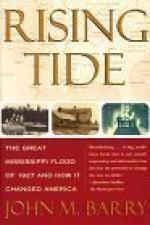
|
| Name: _________________________ | Period: ___________________ |
This test consists of 5 multiple choice questions, 5 short answer questions, and 10 short essay questions.
Multiple Choice Questions
1. What was James Thompson always seeking?
(a) Acceptance by the society and club members of New Orleans.
(b) People to steal from.
(c) A job.
(d) For ways to make more money.
2. In 1926, the Klan began break apart. Why did this happen?
(a) They were being prejudiced against all over the country.
(b) No one wanted to join them.
(c) There wasn't enough money to keep them together.
(d) The leaders were being "nationally convicted" for major crimes.
3. How were the levees along the Mississippi different from levees in other places?
(a) They are taller.
(b) They are made of different materials.
(c) They are shorter.
(d) They are built to a higher standard.
4. What helped Leroy Percy lose a lot of his political influence outside of the Delta area?
(a) He wanted to free all slaves.
(b) He helped Vardaman get defeated for a seat in Senate.
(c) He enforced the need for slaves.
(d) He advocated for the rights of women.
5. Who was at the center of New Orleans finances and is also a Club member?
(a) James Pierce Butler Jr.
(b) Hoover.
(c) LeRoy Percy.
(d) Will Percy.
Short Answer Questions
1. What kept the Delta area underdeveloped during WWI?
2. How were the results of Thompson's plan being predicted?
3. Whose biography was told?
4. When was the first recorded flood of the Mississippi River?
5. Who finally gave approval for Thompson to organize his plan when he arrives back to the Delta area?
Short Essay Questions
1. Why does the destruction of the St. Bernard and Plaquemines levee prove to be unnecessary?
2. The railroads and river make the Delta region flourish, yet there is a shortage of workers in the area. How will the better treatment of blacks by LeRoy Percy help this problem?
3. What does the Boston Club symbolize in New Orleans?
4. After facing complete opposition, how would Eads' offer to independently pay for the construction of the jetties completely change the minds of the public and politicians?
5. What would be the purpose of one town sabotaging the levee in another town?
6. Both Ellet and Humphreys are in competition to survey the Mississippi River. Ellet's report came out first and Humphreys takes Ellet's report as a personal insult. Why would Humphreys be insulted by Ellet's report?
7. Thompson has the idea of dynamiting the levees to the south of New Orleans, but who gets the idea primarily accepted by everyone?
8. As committees are formed to decide about dynamiting the levee, the Mounds Landing crevasse is brought up in conversation. Why is this crevasse brought into the conversation?
9. Humphreys has his friend, Charles Howell, inspect the progress Eads is making on the jetties. Howell makes a report that the jetties aren't working the way Eads said they would. Eads in turn has a friend of his disclaim Humphreys' report. Why does Humphreys lie in his report?
10. Why did the author start the book on a stormy night?
|
This section contains 786 words (approx. 3 pages at 300 words per page) |

|




